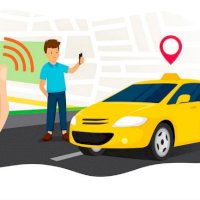Envision being able to provide your passengers with the convenience of combining different travel options with micromobility or sharing them with public transportation. All this thanks to a connected solution that allows you to organize, pay and get around easily.
The platforms generate a considerable amount of data, which can contribute to improving the lifestyle of a city. This is where MaaS solutions, which stand for Mobility as a Service, come into the equation. Mobility as a service collects data from various providers, with the advantage of being all in one app.
MaaS Principles
MaaS solutions integrate different transportation services into a single affordable mobility alternative and works on demand. They include public transportation, trips with reservations, own cars, bicycles, motorcycles, among others. If you prefer, you can also add data on taxis or car rental services.
These seek to compile the services so that they are only paid at once for all of them, either weekly or monthly. MaaS eliminates those boundaries between public, private and shared transportation methods. Thanks to this, a step is taken towards the digitalization of services. In order to modify cities in favor of their progress, focusing on the needs of their inhabitants.
Google Maps and Moovit on the way to using MaaS
Those successfully implementing micromobility in the transportation market are moving to MaaS. It started with Bird, Lime, Waybots and Spin joining the Transit app in April 2018. Two months later, in Europe, CityMapper added the two largest bike services, Ofo and Mobike.
At the end of 2018, Google Maps and Lime exclusively partnered for two and a half years. This is to integrate into short trips, just eight months after Lime started with scooters. The app it ran with showed information about each vehicle, distance, price, and battery life.
There are many successful companies that are constantly joining Google Maps and Moovit, so they have become MaaS trip planning solutions. However, it is not possible to make payments per trip through these, so they are not classic MaaS. Despite this, they offer great benefits in the form of a large user database, as well as improved planning habits.
Anchored in the sustainability of micromobility
We are all aware that air, noise and traffic pollution in cities has been increasing. By promoting micromobility, more environmentally friendly means of transportation are offered, in addition to reducing the number of cars per city. In fact, many more people move in a clean, fast and, above all, way that tries to be as inexpensive as possible.
Promoting MaaS leads to more shared public and private transportation methods being used, resulting in less dependence on the private car. Occupying fewer parking spaces, leaving free areas for more green areas that improve the quality of life and health of citizens. Therefore, it helps to be aware that purchasing a vehicle is not so necessary if you review the alternatives.
The farewell of the tickets
As these systems are managed by apps, the need for tickets or exchange of cash decreases. Passengers will begin to use their phones as credentials, so they can enter each leg of their trip. Yes, in each transport there will be a validation form, which the software will adapt in each case to a single electronic ticket.
These new measures would eliminate lines to buy tickets and you will still be able to make several payments at once. That is, if you need to go by taxi, but prefer to go by scooter later, you process both journeys at once. Being able to be on time because you eliminate cumbersome checks and confirmations.
Connectivity and security
The idea of starting with MaaS began at the time when the devices were common throughout the world. Since this would avoid leaving aside sectors of the population due to not having access to smartphones. These currently have real-time GPS functions, quick response, cameras and data collection.
Likewise, it is evident that the use of devices for these shared mobility services is a safe system. Thus, it is effective both for the customers who use it and for public and private micromobility or regular transportation companies. All these features that we mentioned make it possible to develop custom applications.
Opportunities for all
Until very recently, getting around the city was equivalent to spending a lot of money purchasing and maintaining a vehicle. It was a symbol of high social status, for which not everyone could make the sacrifice of buying a vehicle to get to their jobs or errands. Mobility as a service is a great way to unite people, in order to give them access to services based on sharing and coexistence.
MaaS brings together people who have the same need and the same objective. It can be through public transportation or through shared mobility transportation that is carried out by private companies. Give up your own car to have a great alternative, while improving traffic conditions in the city.
Positive mobility
Technology is our ally, in order to adapt to a better world, with accessibility that adapts to our needs. It is a fact that MaaS and micromobility will be much stronger in the future, where trips can be booked with a couple of clicks. It is incredible to see the world changing for the positive, both for citizens and the environment.






